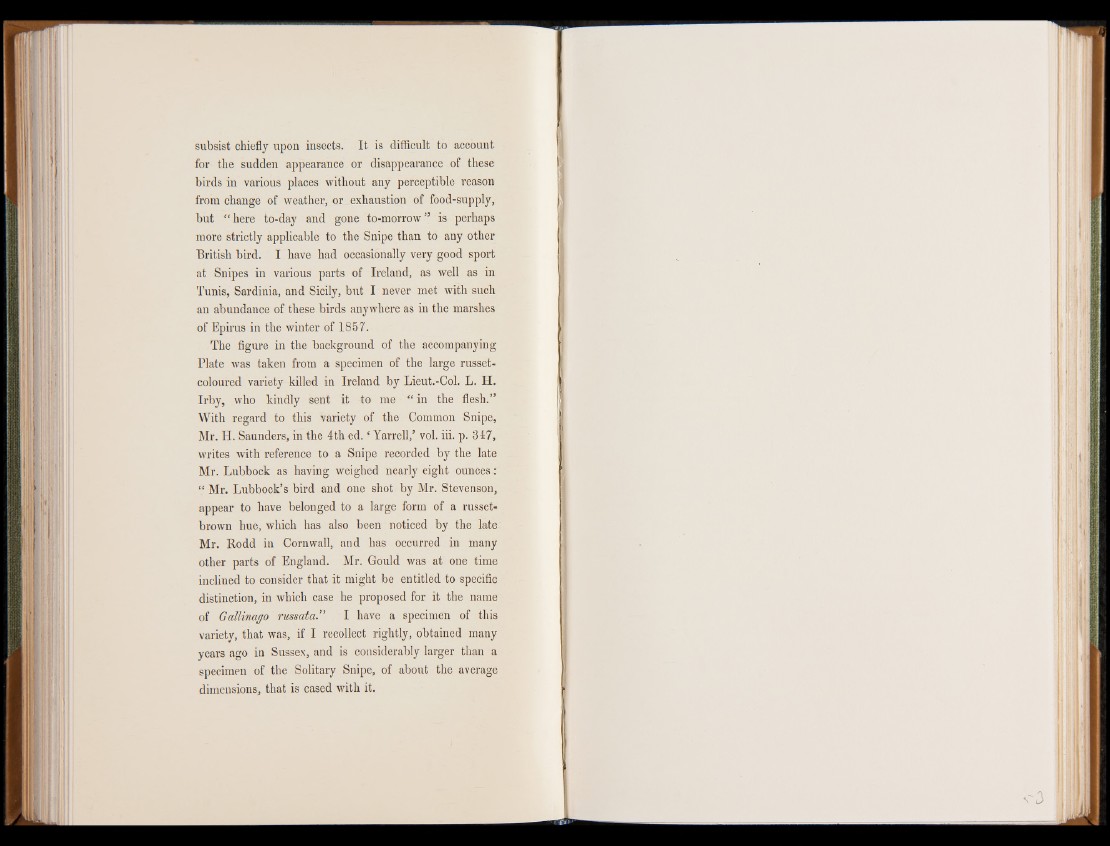
subsist chiefly upon insects. It is difficult to account
for the sudden appearance or disappearance of these
birds in various places without any perceptible reason
from change of weather, or exhaustion of food-supply,
but “ here to-day and gone to-morrow” is perhaps
more strictly applicable to the Snipe than to any other
British bird. I have had occasionally very good sport
at Snipes in various parts of Ireland, as well as in
Tunis, Sardinia, and Sicily, but I never met with such
an abundance of these birds anywhere as in the marshes
of Epirus in the winter of 1857.
The figure in the background of the accompanying
Plate was taken from a specimen of the large russet-
coloured variety killed in Ireland by Lieut.-Col. L. H.
Irby, who kindly sent it to me “ in the flesh.”
With regard to this variety of the Common Snipe,
Mr. H. Saunders, in the 4th ed. ■' Yarrell,’ vol. iii. p. 347,
writes with reference to a Snipe recorded by the late
Mr. Lubbock as having weighed nearly eight ounces X
“ Mr. Lubbock’s bird and one shot by Mr. Stevenson,
appear to have belonged to a large form of a russet-
brown hue, which has also been noticed by the late
Mr. Rodd in Cornwall, and has occurred in many
other parts of England. Mr. Gould was at one time
inclined to consider that it might be entitled to specific
distinction, in which case he proposed for it the name
of Gallinago russata.” I have a specimen of this
variety, that was, if I recollect rightly, obtained many
years ago in Sussex, and is considerably larger than a
specimen of the Solitary Snipe, of about the average
dimensions, that is cased with it.